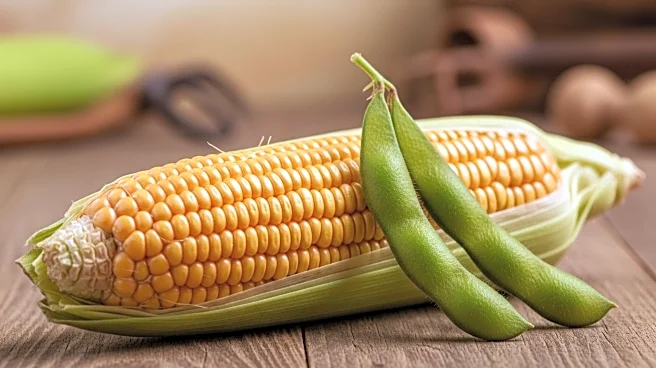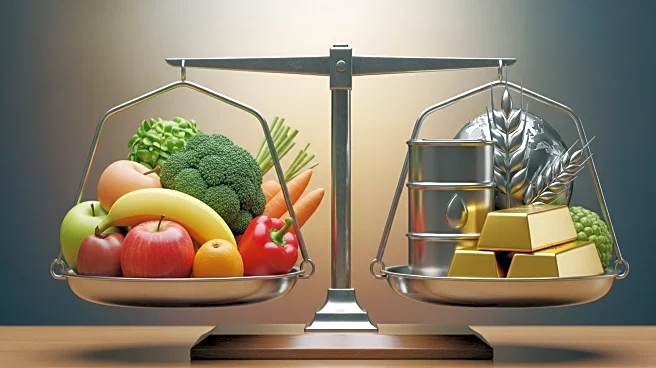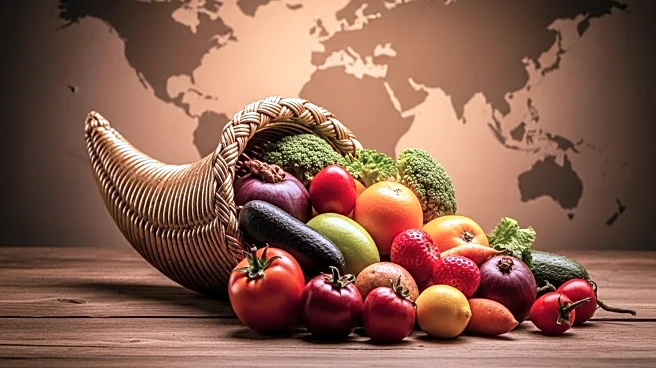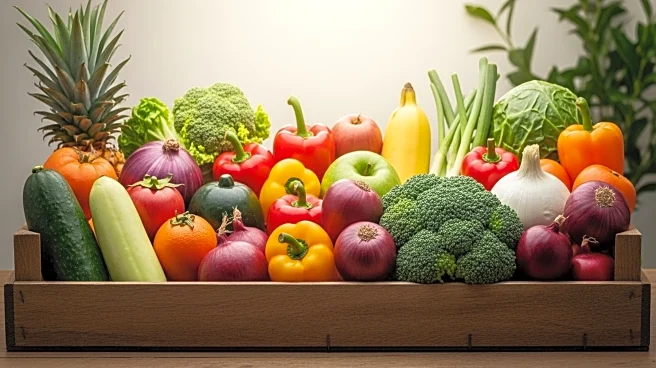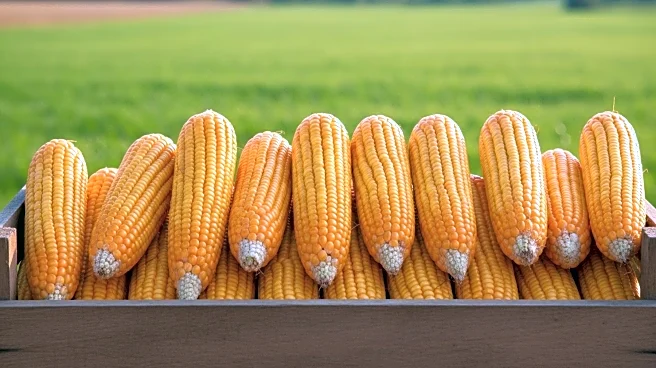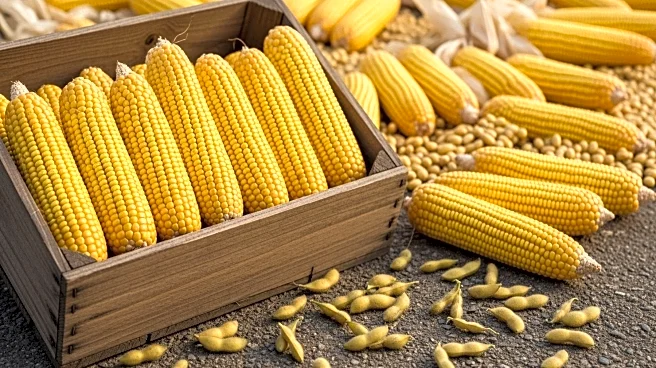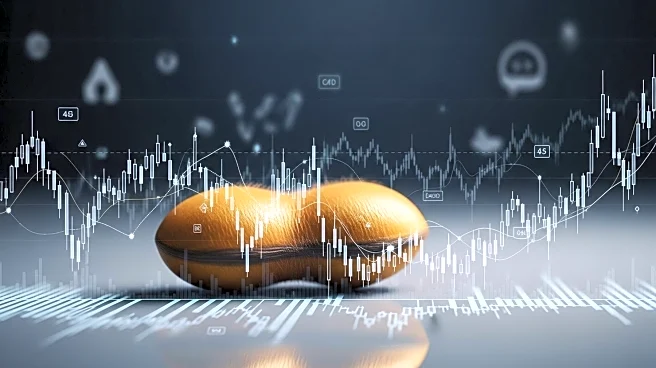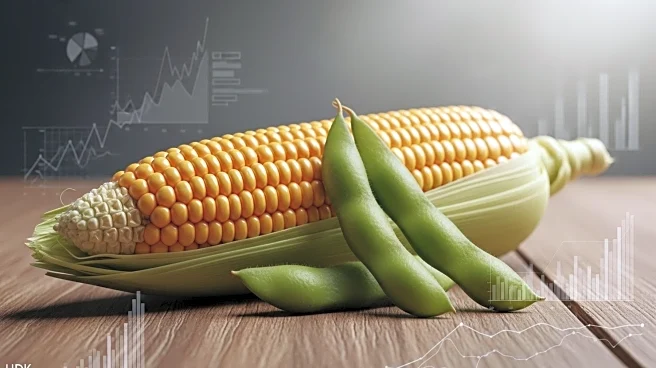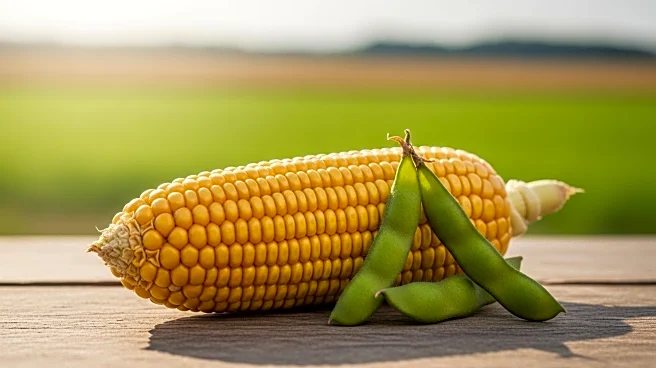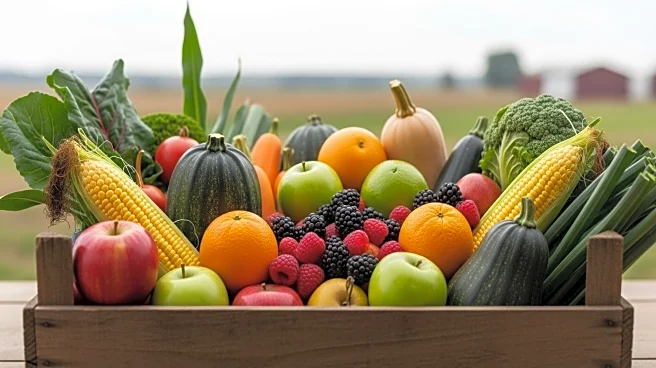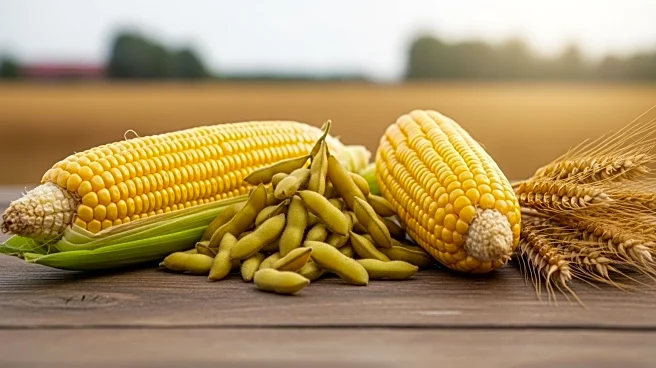What is the story about?
What's Happening?
The U.S. Department of Agriculture (USDA) has forecasted record domestic corn production for the 2025/2026 marketing year, with an expected output of 16.742 billion bushels and a yield of 188.8 bushels per acre. This marks an increase from the previous year's production of 14.867 billion bushels. Despite these high expectations, corn futures fell by 2 cents to $4.17¾ a bushel overnight on the Chicago Board of Trade. Soybean futures also saw a decline, with November delivery prices dropping by 3½ cents to $10.27¾ a bushel. The USDA projects soybean output at 4.292 billion bushels, a decrease from the previous year's 4.366 billion bushels. The decline in futures prices is attributed to favorable weather conditions and calls for dry weather in states where the corn harvest has commenced.
Why It's Important?
The decline in corn and soybean futures prices reflects the market's response to anticipated high production levels and favorable weather conditions. This situation impacts farmers and agricultural stakeholders who rely on futures markets for price stability and financial planning. The USDA's projections suggest a potential surplus in production, which could lead to lower market prices and affect farmers' revenue. Additionally, the decrease in futures prices may influence global trade dynamics, as the U.S. is a major exporter of these commodities. The agricultural sector must navigate these fluctuations to maintain economic viability and competitiveness in the global market.
What's Next?
As the corn harvest progresses, stakeholders will closely monitor weather conditions and production outcomes to assess their impact on market prices. The USDA's projections will guide farmers and traders in making informed decisions regarding crop management and sales strategies. Additionally, the agricultural sector may explore alternative markets or adjust production plans to mitigate potential financial losses. The ongoing monitoring of weather patterns and market trends will be crucial in determining the future direction of corn and soybean prices.
AI Generated Content
Do you find this article useful?
